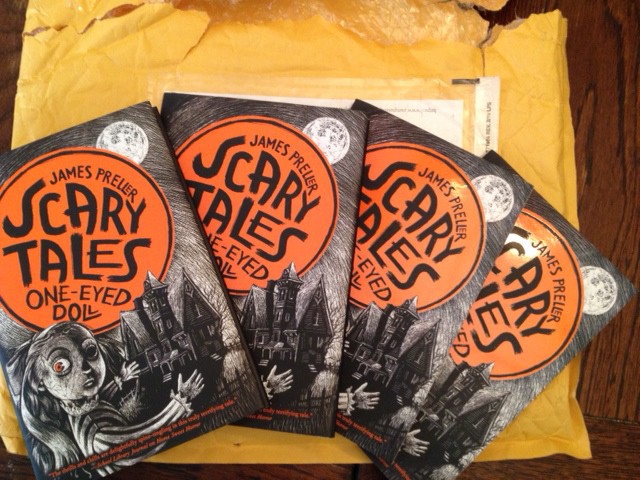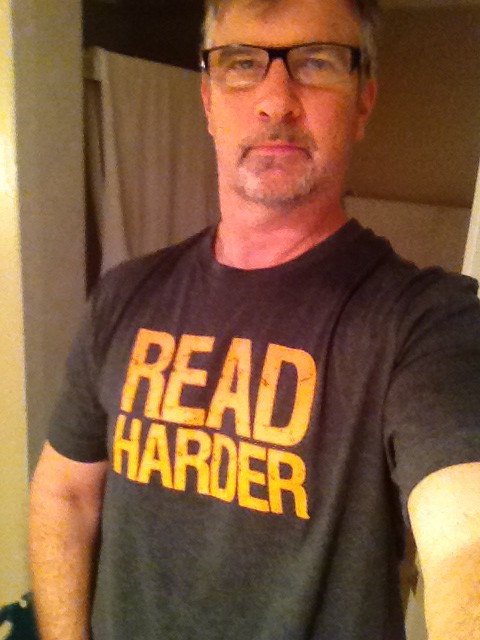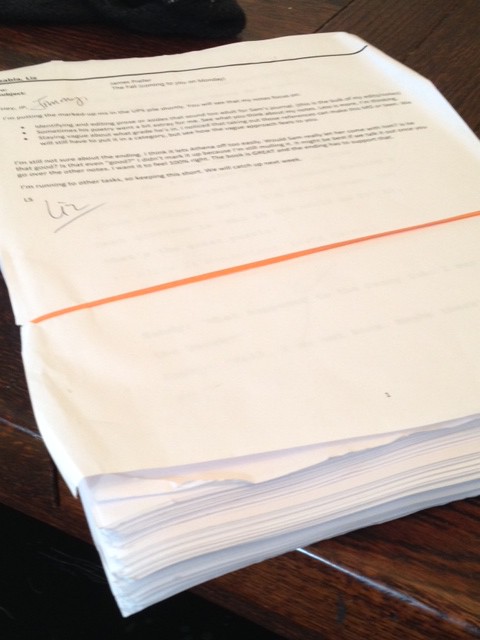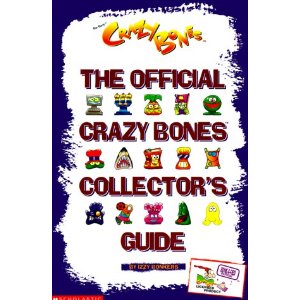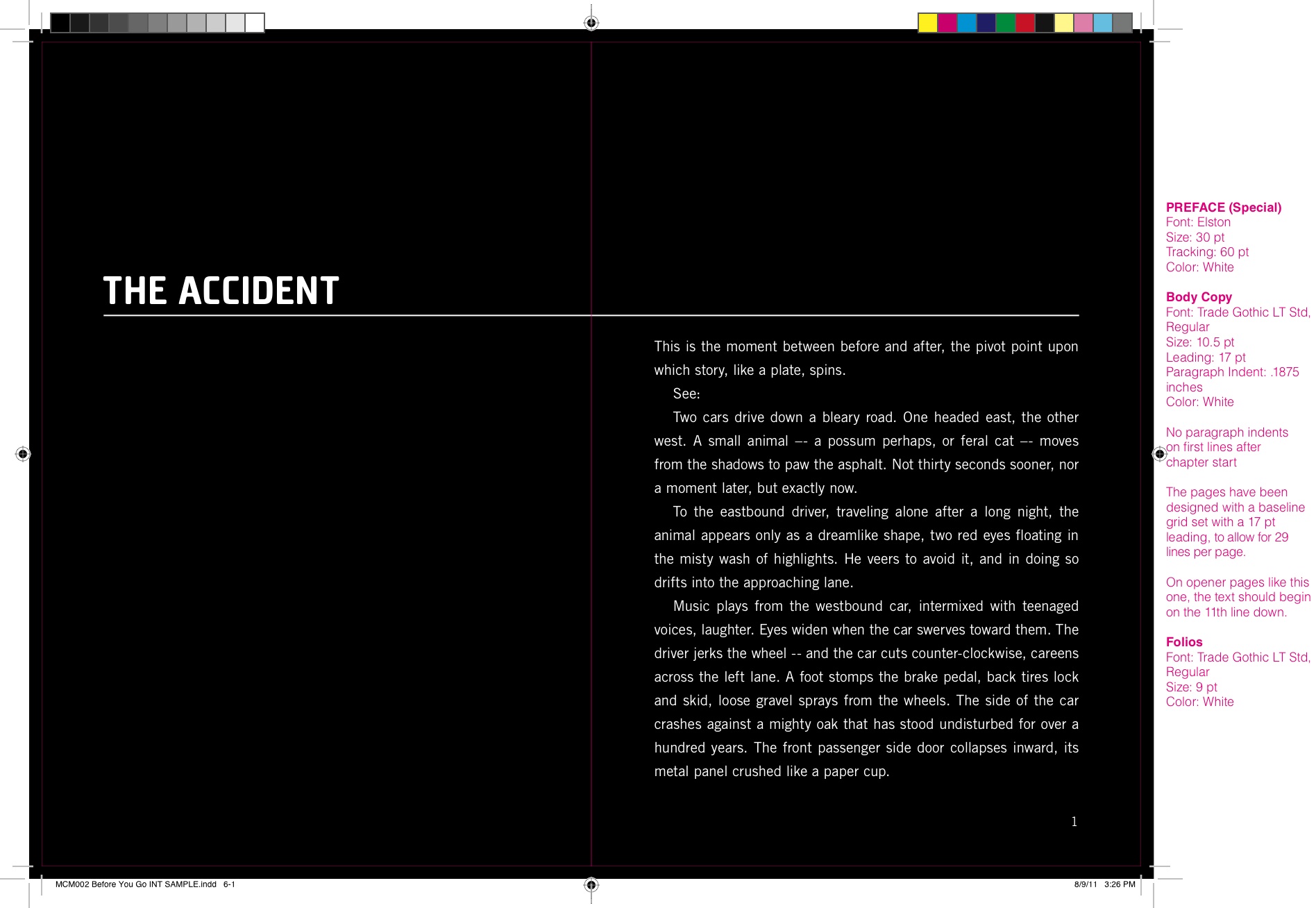Greetings, I’m Lewis Buzbee, guest-blogger for the day.

Guest blogger: Lewis Buzbee.
It’s true, I’ve hi-jacked James Preller’s blog to bring you a very cool conversation with Mr. Preller (he makes me call him that) about his newest book, Before You Go (Macmillan, July 2012), which is his first Young Adult novel. I’ve taken control here because Mr. Preller is a very generous writer who frequently trumpets and supports the work of his fellow writers, and I figure it was time to hear from him. James has interviewed me twice, and our conversations have been so enjoyable, so thoughtful, I wanted to turn the tables, see what he had to say.
Before You Go, I must tell you, is a deliciously good book, whether you call it YA or not. It centers on a tough summer in the life of Jude, who has to face all of the toughest questions — what is love, what is death, what comes next? It’s everything a novel should be; it’s funny, moving, troubling, smart, and illuminating. Forget the labels, it’s a beautiful novel, and you should read it.

James, you’ve written picture books, chapter books, and middle grade novels; Before You Go is your first Young Adult novel. Why now?
Before You Go was the most logical step in a haphazard career path. You could argue that writing older and longer has been a gradual process for me, roughly parallel to the growth of my own children (Maggie, 11, Gavin, 12, Nick, 19). But you asked, “Why now?” and frankly I don’t have an easy answer for that. Except: opportunity. I’m lucky to have an editor, Liz Szabla, who doesn’t look to put me in a box or turn me into a brand. She supports my randomness.
How was writing Young Adult different?
I felt that writing for young adults came closest to my natural voice. I loved going back to my 16-year-old self, tapping into that rich and vigorous vein. So many ideas and feelings and memories bubbled forth. First love, big emotions, friendships, wild times, painful times, all of it. Location became central to this story, and I set it in my hometown, including real places I’d been. That trip out to the Amityville Horror House, for example, that’s something many of us Long Island kids did in our boredom, in our driving-around-looking-for-something-to-do lives. I am instantly transported back into that car with my high school friends, Kevin, Eric, Billy, and Jim –- a bunch of guys, a little lost, trying to figure out Saturday night.

Amityville: one exit in our driving-around lives.
Tell us where and/or how this story came to you?
After glancing through the pink-and-fanged world of Young Adult fiction, I felt a desire to write a realistic book, and a love story from a male perspective. There seemed to be many rescue-type love stories that were extremely romantic, but I felt as a guy, “There’s not one freaking thing here that my teenage self would read.” That’s a slight overstatement, but only slight. So that was the impulse, number one, but where was the story? I got the idea for a car accident out of two experiences: teaching my oldest son how to drive; and my recollection of two boys from my high school, Jesse and Mark, who died the first few months after getting their licenses. I remember driving by the tree where it happened, staring at that big oak, seeing where the bark had been chewed up by metal, imagining the horror. I got the idea to start the book with the accident, page one, then rewind six weeks into the past and tell the story from that point. We catch up to the accident about two-thirds of the way through, meet the characters, wonder who will be in the car and who will die, and so the book is divided into two parts, “Before” and “After.” Thus the novel’s opening sentence:
This is the moment between before and after, the pivot point upon which story, like a plate, spins.

I hoped the accident would give my story enough of a hook to keep readers hanging on, as this isn’t a story that offers one big action scene after another. It can’t be described as a typical book that average boys typically like. I don’t feel at all comfortable with these clichéd, empty-headed notion of what boys supposedly like. As a guy, I’d like to proclaim, “We are more than just farts and fire trucks.”

Farts = still comedy gold after all these years.
I feel there’s a certain self-defeating, self-prophecy in a lot of publishing these days, i.e., boys are big galoots, so let’s give them farting fire trucks, or girls are princesses, etc. Funny, that’s not my memory of being a kid — I had all sort of interests.
When you first glance at a list of “books for boys,” well, yes, certainly, there are many appealing books on there. Action, sports, humor (bodily, mostly), and so on. But that kind of list depresses me, because it boils down boys to caricature. Boys only like X and Y and Z.

So while there is always a degree of truth to every stereotype, I know boys who are sensitive and thoughtful, funny and frightened, lonely and confused. Boys who don’t fit the mold. Or I should say, boys who can’t be contained by the mold; they keep surprising us in new ways. Our so-called “books for boys” should not pander to an extremely narrow view of what “boy” is and what “boy” can become. I am saying as a father and an ex-boy: It’s hard not to feel insulted. I don’t intentionally set out to write for “boy readers” or “girl readers.” I write about characters and situations; readers will relate or not. I don’t know which sex will read Before You Go, but I know the story involves boys and girls, so I’m hoping for a variety of readers. Fat ones, skinny ones — come all.
Didn’t anyone tell you that teenagers “just don’t read anymore?”
I can’t listen to that stuff. Statistics, numbers, none of it connects with what I do as a writer, or what any individual does as a reader. The thing for me about this particular “market,” as they say, is that I have no experience with it, and no idea who if anyone is going to read my book. This might sound phony, but I wrote this book for myself –- I wanted it to exist, and I took my time writing it, too. I’ve been involved in children’s publishing since 1985, much of the early years with book clubs, where there’s direct, immediate feedback from the marketplace. I usually have a pretty good idea when a book might sell or when it won’t. But for this novel, I haven’t a clue. But yes, certainly, I would love to get starred reviews and awards and all that stuff –- I’d love that — and I do wish for readers to find and enjoy Before You Go.
This seems a huge oversight, but didn’t your editors point out that there are no vampires in here, no angels, no dystopias? What were you thinking?
I was recently inspired by a blogger who encouraged us to “read out of our comfort zone.” You know, the books you don’t usually pick up. So I grabbed Laini Taylor’s The Daughter of Smoke and Bone –- which has gotten gigantic buzz, sold the movie rights, amazing cover. I was curious about what I might be missing.

It’s a beautifully written story about angels and dystopias and underworlds and bizarre creatures and idealized romantic love, paranormal or otherwise, and on and on. And you know what? I was unmoved. I could admire much of it, particularly the language and the imaginative feat of creating an alternate universe. I respect it, but it’s not where I want to live as a reader. That’s not a criticism of the book, more a reflection of my own interests. Same thing with me as a writer. I am stuck with the person I am. Which does not rule out, by the way, magic realism or other elements of fantasy. See my comment about, re: haphazard career. I like to try new things, so I wouldn’t rule out anything. And to be clear: I’m glad I read Laini Taylor’s book.
Tolstoy said a writer can get lots of things wrong, but not the psychology, meaning, a work, no matter how fantastical, had to ring true to human life. This is what I find so wrong with so much vampire/fantasy/dystopian literature these days. It works on the page, but not in real life.
Realism is the coin of the realm, the heart of all fiction, including the most imaginative fantasy. It has to connect to the human heart, it has to feel true. That is, credible. In a book I’ve been writing for a long time, I began with an impossible idea. Something that couldn’t ever happen. But . . . what if? And the essential thing, I think, is to play that out as credibly as possible, there has to be a cohesive internal logic. It’s been a struggle, frankly, but I view that as a good sign. I believe a writer can accomplish powerful things in any genre, even if it involves, oh, fat vampires on a spa retreat in New Mexico. But sooner or later it’s got to deal with the human heart — or else who really cares beyond the momentary diversion?
You write: “He was in between, a lit fuse, a teenage rocket exploding, and he felt there was nothing for him on this Wrong Island.”
I am a child of suburbia and this book reflects that.

Wrong Island, New York. Levittown, specifically.
Many of my friends and I shared a sense of not belonging, of having inherited a world not of our making. I just wanted to get out, you know, create my own reality –- and I think a lot of teenagers feel the same way. Isolation, alienation, I used to think they were teenage feelings. But now at age 51, it seems like a lifelong perspective. You learn to become okay with not quite fitting neatly into the world’s puzzle.
It seems to me that, no matter outward appearances, this is how all teenagers feel, outside, stuck between childhood and adulthood, “in between.”
Literature is a powerful force –- the written word mightier than the sword, and all of that. Sometimes we forget it, but it’s still true. Ideas do change the world. Atticus Finch and how important it is to walk in someone else’s shoes, for example. To go somewhere else, or to be someone else, if only in your mind. To imagine the possibilities. That’s what’s so exciting about YA, this incredible in-between moment in a life. I was listening to a renowned speaker the other day and it’s clear that right now, today, the universally-accepted answer among educators is that kids need to read in volume. Don’t worry about what they are reading, so much as that they are reading. In other words, it’s about quantity over quality, to the point where quality isn’t even in the equation. And I get that, I really do, the way a young soccer player needs “touches” on the ball, and a musician needs hours with his instrument, but there’s a part of me that thinks, “Yeah, but that doesn’t connect with why I personally love books.” We also need soccer players, and musicians, and readers to love what they do . . . or else they quit.
Told in the third person, the novel stays with Jude’s character most of the time, but there are two places where you dip into his girlfriend Becka’s consciousness, and later we have access to Jude’s mother’s thoughts. Tell me about this choice.
I often begin my books by writing out of sequence and from spontaneous inspiration — building on random scenes and sentences — and as a result my rough drafts tend to lack consistency. But I revise continuously, endlessly, and over time the editor-in-mind cleans up the mess. Conventional thinking would have me “fix” all those lapses. Fortunately, I was able to talk over each scene with Liz, my editor. Sometimes I made those revisions, other times we mutually concluded, “No, this feels right, let’s keep it.” We have the same conversations about split infinitives, by the way. Oh, those are exciting times. Other editors might have told me those point-of-view lapses had to go. But as Thoreau said, “Consistency is the hobgoblin of small minds.” The guideline I try to follow is, “Does this work?” Another way of saying, I don’t pull every dandelion.

One of Steinbeck’s editors pointed out to him that a character early in a novel had blue eyes, but later brown, and was he going to fix that. I believe he told them to go to hell. All good books have flaws, which I believe adds to the sense of their rightness, oddly.
Right, you want to honor the mistakes. It’s a matter of taste. I compare it to music. Some bands are really polished, everything sounds perfect, slick and smooth, labored over in the studio, whereas other artists prefer to keep the rough spots, the grit –- they resist the surface sheen and focus more on making that direct emotional connection, warts and all. There’s a native distrust of polish and shine and, more significantly, even of that part of the brain, the parent-in-the-mind, where something essential gets lost in the refinement process. Most of the Beat writers felt that way. Perfection has a certain blandness, don’t you think? Don’t get me wrong. I work very hard to make the book the best it can be –- according to my own taste and ability — so I can’t pretend that my failures are intentional.
Much of the first half of the book takes place at Jones Beach, where Jude has his first job in a grease palace by the sea.
That was my summer job, age 16, flipping burgers, hauling garbage out to the Dumpster, sneaking out beer in big, plastic mustard jars. The sun, the heat, the beach, the bikinis, and that first paycheck.

I knew it would make for a vivid setting for a teenage story, that classic dumb summer job we all suffered through and secretly loved. Jude is not me, he’s his own character, but I worked that job, I know that world.

That’s the Field 6 concession stand at Jones Beach.
You’ve spoken previously about that reader who is, how did you put it, able to be bored, that is, able to enjoy being bored and sink deeply into a book, let the hours go by.
A lot of ways to answer this, and I’m afraid I might try them all, so you better grab a chair. More and more, I see writing is an act of faith, a trust. This comes back in some ways to the boy reader, which is a code, by the way, for the impatient reader, the barely-willing-to-put-up-with-it reader. And we’re told that the way to reach this hard-to-reach reader is through short chapters, lots of action, one conflict after another, etc. It rewards a certain kind of typing. But I feel as a writer and as a reader, that I’ve always (also) liked the slow parts. There are forty books in the Jigsaw Jones series, and the mystery is always the engine that drives the action forward. But my favorite parts are often the closely-observed, domestic moments. Three brothers in a room, or the parents painting a bathroom together, or the conversation at the dinner table. I saw one of my writing heroes in New York City back in the late 80’s, the great Roger Angell. During his talk, Angell compared reading to being a baseball fan, which I am.

Baseball fans and avid readers both share a willingness to be bored.
He contended that both occupations are for people who are not afraid of being bored. I’ve never forgotten that observation. I’ll quote Angell here, because I have a recording of that talk and I recently transcribed it: “It really is one of the great pleasures of baseball. If you sit there in the early innings, there’s that wonderful time when you wait and see what kind of game this is going to be. Every game is so different from the other, and you need those early chapters, sometimes very slow moving, in order to lead up to the end of the book, the end of the game.” First off, that’s brilliant. And so true. To me, at any given moment a story moves horizontally (the plot advances) or vertically (characterization deepens). Those directions are not mutually exclusive, the line may be slanted, but that’s basically the two main thrusts. I’ve always been drawn to the slowing down, the sinking into character and setting, more so than the headlong forward rush to the next big climax.
For example, there’s a small moment in Before You Go, a few paragraphs early on, when we see Jude at home for the first time, and we meet his mother. His father has already told Jude that she is in bed with a headache, not to be disturbed. So Jude enters the house after his first day of work, tired and dirty. I love that mother and son are separated by a shut door, the staging tells us all we need to know.
In the hallway, he paused outside the closed door of his parents’ bedroom, tilted an ear, listening for movement.
“Jude?” his mother called.
“Yeah, it’s me, Mom,” he answered. “How you feeling today?”
A long silence. “I’m sorry, I’ve got nothing for you in the kitchen,” she finally said, her voice muffled, as if groaned into a pillow.
“That’s okay, Mom, I’m good,” Jude replied. He considered telling her about work, how some girl saved him from getting pummeled by a trio of behemoths, but it felt awkward trying to talk through a door. He placed his right hand on the door as if to push it open, and he saw his fingers as the legs of a fleshy spider perched there, tingling. Jude rested his head against the jamb, shut his eyes. He waited in the hush for something to happen, some change to occur, but nothing did.
Nothing ever did.
I’m proud of that little encounter. “I’ve got nothing for you,” she says. To like my book, I think you have to enjoy those quiet moments. You must have the patience of a baseball fan. Admire the way a pitcher drops that 0-2 slow change just off the outside corner, low and away, trying to entice the hitter to chase. The art, the craft, the whole of it. In this scene, I’m plunging downward, not across. It’s slow, not fast. And I need a reader who is okay with that. I have faith that that reader exists, just as any reader must have faith in the writer –- that eventually he’ll deliver. But nonetheless, I wrote it anyway. That’s the thing. You just write. Because it’s what you do.


